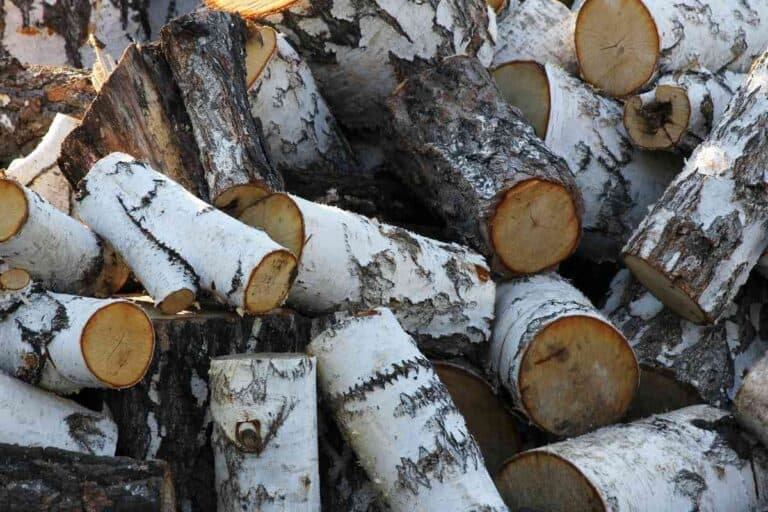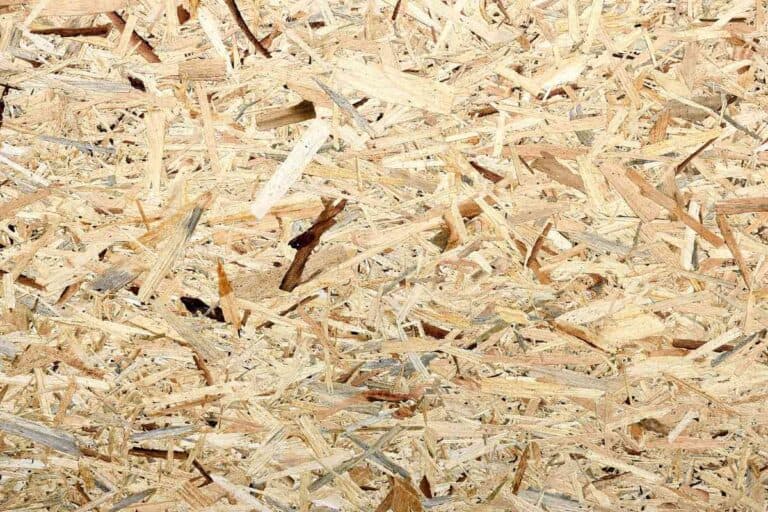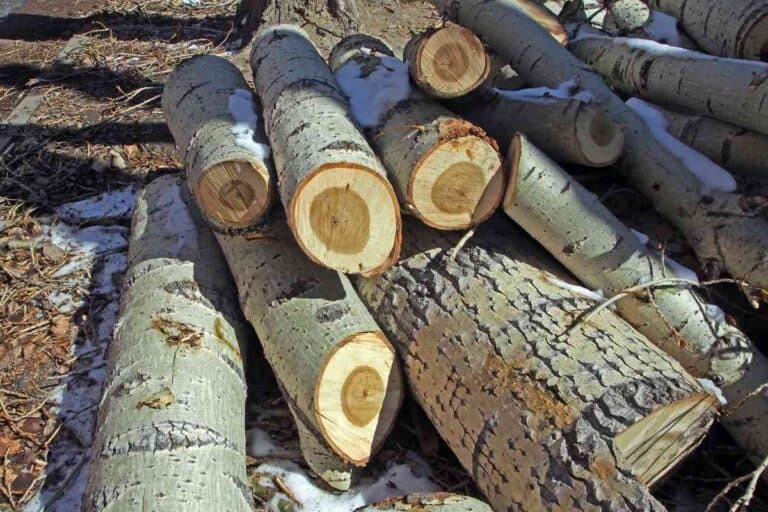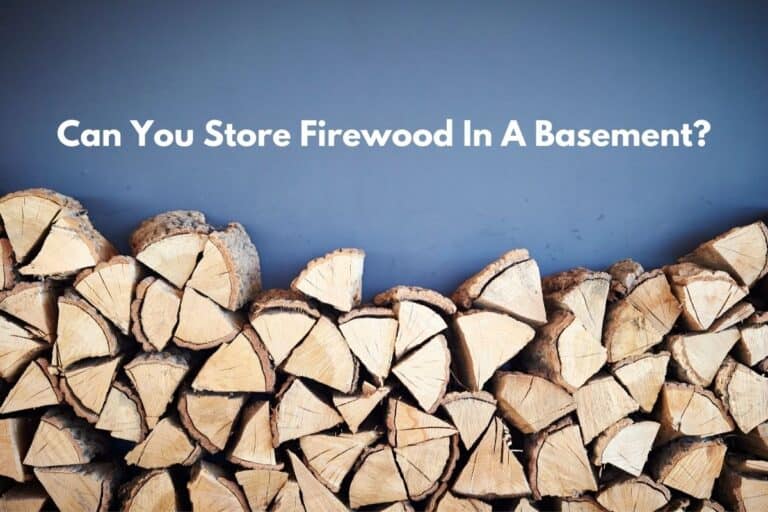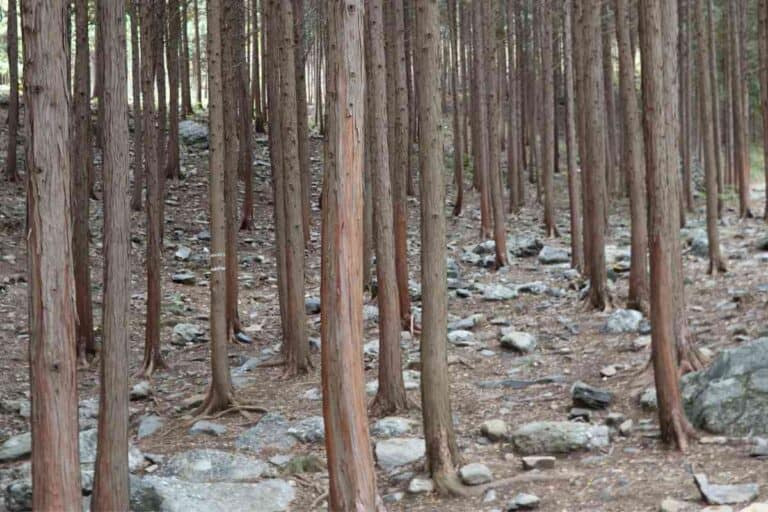The Ultimate Guide to Firewood: Types, Preparation, and Storage
In this comprehensive guide to firewood, we cover everything you need to know about different types of firewood, how to prepare and store it, and tips for getting the most out of your fires. Whether you’re a seasoned firewood user or just getting started, this article will help you make the most of your fires.
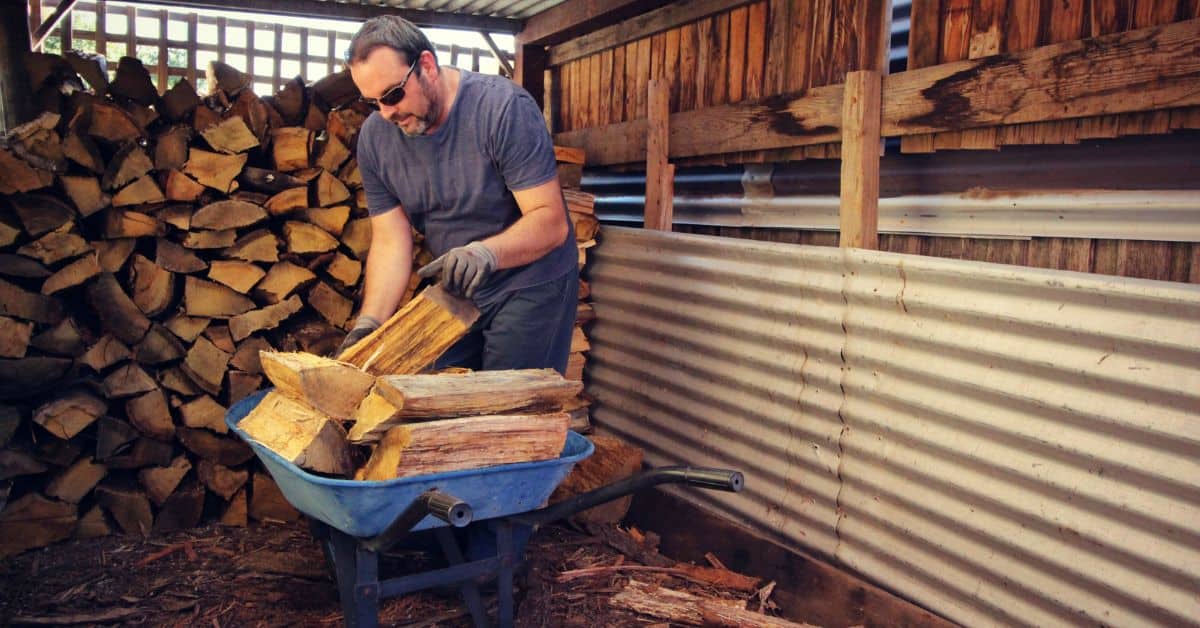
Choosing Premium Firewood for Your Fireplace: The Importance of Quality
For centuries, firewood has been a reliable and affordable source of heat for millions of households around the world. Whether you’re using it to warm up on a cold winter night or to create a cozy ambiance in your living room, a bundle of firewood is a must-have for any fireplace owner.
However, not all firewood is created equal. To get the most out of your fireplace, it’s crucial to choose the highest quality firewood. Burned improperly, or using subpar, insect-infested or diseased wood can have negative consequences for your chimney, indoor air quality and even your health.
That’s why we created this guide to help you choose the right type of firewood. We’ll cover everything from the best species of dried firewood to the common insects and diseases to look out for, so you can enjoy a warm, safe, and environmentally-friendly fire every time you light up your fireplace.
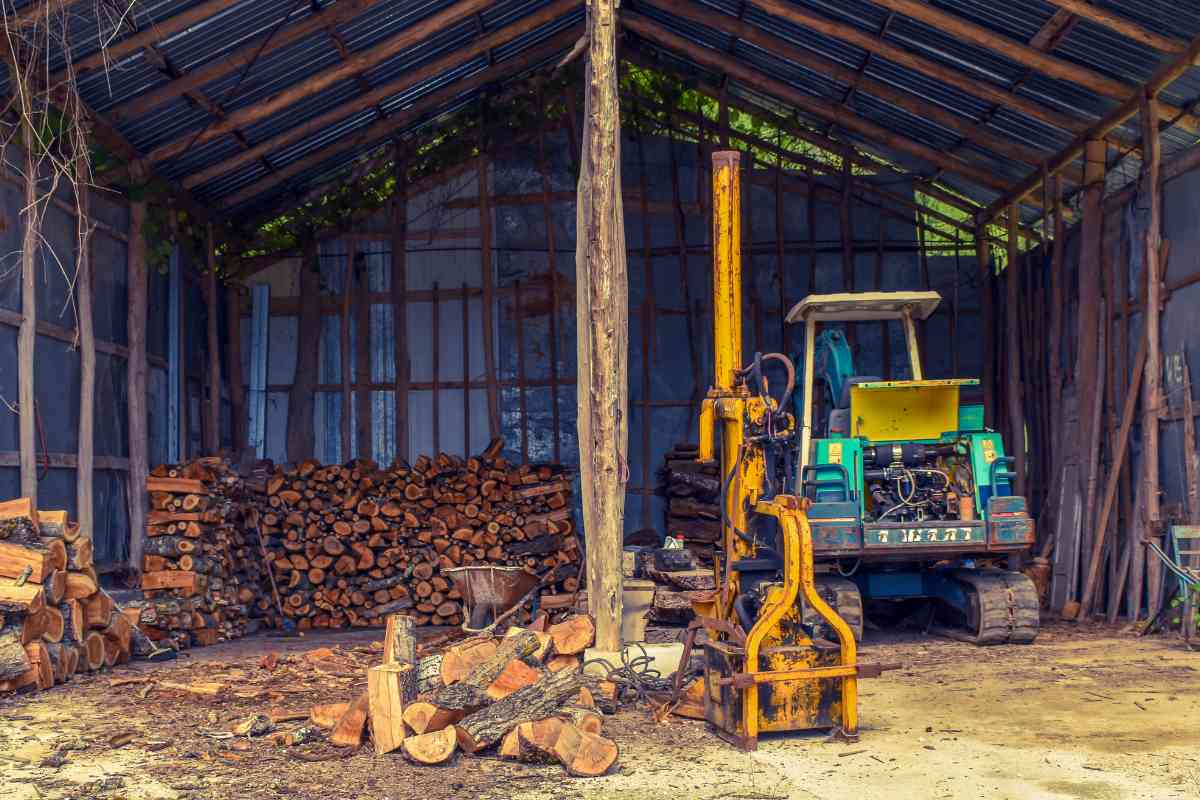
Comparing Firewood Types: Pros and Cons, Moisture Content, Density, and Availability by Region
| Type of Firewood | Pros | Cons | Moisture Content | Density | Region of Typical Availability |
|---|---|---|---|---|---|
| Oak | – Burns hot and slow – Good for cooking and smoking – Long-lasting coals – Widely available | – Can be expensive – Takes longer to season – Can be difficult to split | 20-25% | 45-50 lbs./cu. ft. | Eastern U.S. |
| Ash | – Easy to split – Burns hot and fast – Good for cooking – Produces little smoke | – Can be difficult to find – Can be expensive | 20-25% | 37-42 lbs./cu. ft. | Eastern U.S. |
| Pine | – Easy to find and buy – Lights easily – Good for kindling and starting fires | – Burns quickly – Produces a lot of smoke – Not as hot as hardwoods | 20-25% | 25-30 lbs./cu. ft. | Widely available |
| Birch | – Easy to split – Burns hot and fast – Produces little smoke – Good for cooking | – Can be expensive – Can be difficult to find | 20-25% | 41-47 lbs./cu. ft. | Northern U.S. and Canada |
| Cedar | – Lights easily – Produces a pleasant aroma – Resistant to insects and decay | – Not as hot as hardwoods – Produces a lot of smoke – Can be difficult to split | 20-25% | 23-26 lbs./cu. ft. | Widely available |
| Walnut | – Burns hot and slow – Good for cooking and smoking – Produces long-lasting coals | – Can be expensive – Can be difficult to split – Can stain clothes or skin | 20-25% | 38-43 lbs./cu. ft. | Eastern U.S. |
| Poplar | – Easy to find and buy – Burns cleanly – Good for kindling and starting fires | – Burns quickly – Not as hot as hardwoods – Produces a lot of smoke | 20-25% | 22-27 lbs./cu. ft. | Widely available |
| Hickory | – Burns hot and slow – Good for cooking and smoking – Produces long-lasting coals | – Can be difficult to split – Can be expensive – Produces a lot of smoke | 20-25% | 43-48 lbs./cu. ft. | Southern and Eastern U.S. |
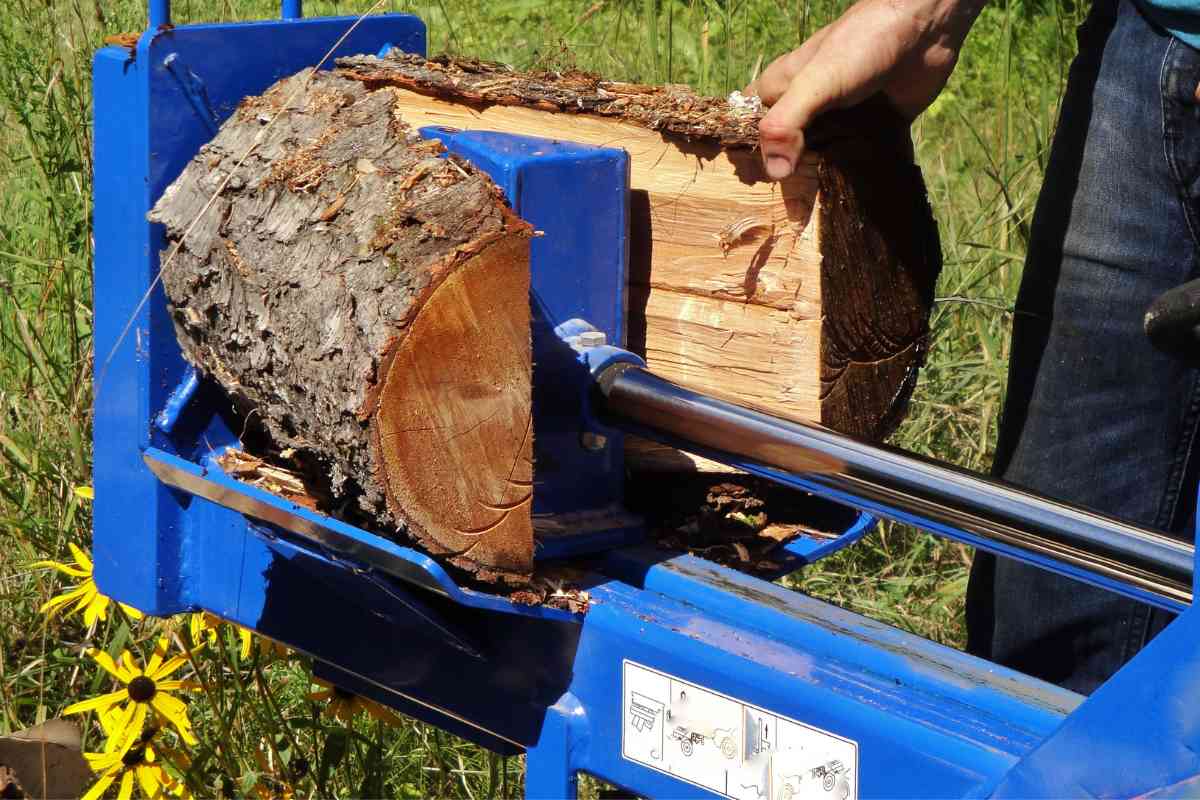
Suggested Reading: Why Is My Firewood Burning Blue And Green? Should I Worry?
Selecting Firewood: A Guide to Matching Wood with Your Equipment
The following chart provides a quick visual overview of the different types of firewood and the various appliances or equipment each type is suitable for.
In addition, it includes special characteristics and potential health hazards associated with each type of firewood. This information can be particularly helpful for those looking to buy firewood for their homes or outdoor activities and want to ensure they select the right type for their needs.
| Firewood Type | Pros | Cons | Moisture Content | Density | Availability | Suitable for | Special Characteristics |
|---|---|---|---|---|---|---|---|
| Oak | Burns hot and long, good for cooking and smoking meat, widely available | Takes longer to season, heavy and difficult to split, sparks may fly | 20-30% | High | Widely available in North America and Europe | Fireplaces, stoves, and outdoor fire pits | No special characteristics |
| Pine | Quick to light, fragrant smoke, ideal for kindling, widely available | Burns fast, low heat output, may produce too much creosote | 50-60% | Low | Widely available in North America and Europe | Outdoor fire pits and campfires | Fragrant smoke |
| Ash | Easy to split, burns hot and long, good for cooking, low smoke output | Not widely available, may be expensive | 20-30% | High | Less common in North America, more prevalent in Europe | Fireplaces and stoves | No special characteristics |
| Birch | Easy to light, fragrant smell, good for kindling, available in many regions | Burns quickly, low heat output, may be expensive | 20-30% | Low | Common in North America and Europe | Fireplaces and outdoor fire pits | Fragrant smell |
| Cherry | Burns hot and long, fragrant smell, good for cooking and smoking meat | Not widely available, may be expensive, may cause health problems for some people | 20-30% | High | Less common in North America, more prevalent in Europe | Fireplaces, stoves, and outdoor fire pits | Fragrant smell, potential health hazards |
| Cedar | Pleasant smell, easy to split, good for outdoor fires, natural insect repellent | Burns quickly, produces a lot of smoke, may cause health problems for some people | 20-30% | Low | Common in North America | Outdoor fire pits and campfires | Pleasant smell, potential health hazards, natural insect repellent |
| Hickory | Burns hot and long, good for cooking and smoking meat, widely available | Takes longer to season, heavy and difficult to split | 20-30% | High | Widely available in North America | Fireplaces, stoves, and outdoor fire pits | No special characteristics |
| Maple | Burns hot and long, good for cooking, widely available | Takes longer to season, heavy and difficult to split | 20-30% | High | Widely available in North America and Europe | Fireplaces, stoves, and outdoor fire pits | No special characteristics |
| Spruce | Quick to light, fragrant smell, ideal for kindling, widely available | Burns fast, low heat output, may produce too much creosote | 50-60% | Low | Common in North America and Europe | Outdoor fire pits and campfires |
Fragrant smell |
Note: This data is accurate to the best of our knowledge. However, local municipalities and regions of the country might have different regulations and guidelines for burning wood in your area. Please verify before purchasing or harvesting firewood in your area.
Recommended Reading: How many cords of wood per acre? (Growing Firewood)
The Importance of Preparing Firewood: Tips for Selecting and Storing the Best Firewood
When it comes to using firewood as a heat source, it’s important to select and prepare the right type of firewood for optimal performance. Kiln dried firewood is the highest quality option, as it has been dried in a kiln to reduce moisture content and eliminate pests.
When selecting firewood, it’s important to consider the species, moisture content, and density, as these factors can impact its performance (See table above).
Once you’ve selected your firewood, it’s important to store it properly to maintain its quality and prevent pests from infesting the wood.
A cord of firewood typically contains about 128 cubic feet of wood logs, and proper storage can ensure that your investment lasts through the winter season. In this section, we’ll cover tips for selecting and preparing the best firewood to keep your fireplace, stove, or outdoor fire pit burning strong.
Here are some tips for selecting the best firewood:
- Choose hardwoods over softwoods for a longer burn time and more heat output.
- Look for firewood with low moisture content, ideally below 20%.
- Buy from a reputable source, such as a certified firewood vendor, to avoid pests or diseases.
- Select firewood that is the right size for your fireplace or stove, to avoid overloading or under-filling.
- Consider the aroma and smoke output of the firewood, if these factors are important to you.
- Be aware of any potential health hazards associated with certain types of firewood, such as poison ivy or toxic fumes.
- Take into account the local availability of firewood types, as well as their cost and environmental impact.
The Art of Cutting, Splitting, and Seasoning Firewood
Cutting and splitting firewood is an essential part of preparing a steady supply of fuel for your wood-burning appliances. Properly cut, split, and seasoned firewood can provide an efficient, clean-burning fuel source that can keep your home warm and cozy during the cold season.
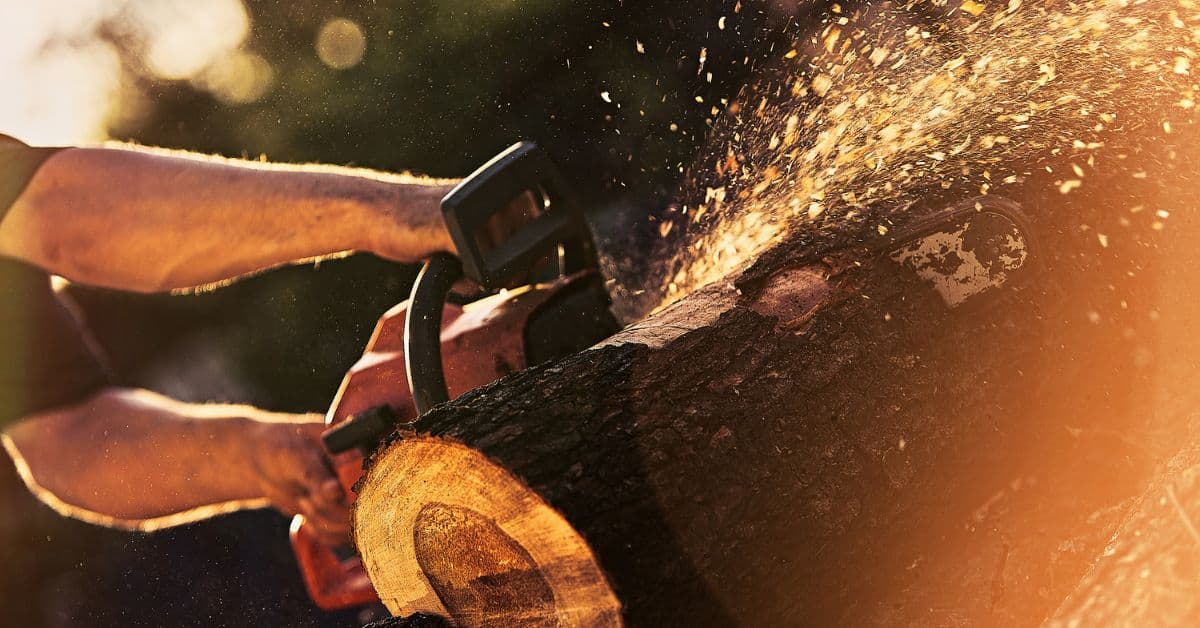
To ensure that your firewood burns well and lasts longer, it’s essential to follow some best practices when cutting, splitting, and seasoning your firewood. In this section, we’ll explore the step-by-step process for preparing firewood, including selecting the best wood, tools you’ll need, and how to dry and store it properly.
Here are some tips for cutting, splitting, and seasoning firewood:
- Choose the right tools for the job: A chainsaw, maul, wedges and a sledgehammer are all useful for cutting and splitting firewood.
- Cut your firewood to the proper length: Most fireplaces and stoves are designed to accommodate firewood that is 16-18 inches in length.
- Split your firewood into pieces that are easy to handle: 6-8 inch diameter rounds are the ideal size for most firewood.
- Stack your firewood in a location that receives plenty of sun and wind: This will help the wood dry out more quickly.
- Cover the top of your stacked firewood with a tarp or other waterproof material: This will protect the wood from rain and snow while allowing it to continue drying out.
- Allow your firewood to season for at least 6 months before burning it: This will ensure that the wood is dry and will burn efficiently.
Don’t Get Burned: Common Mistakes to Avoid When Preparing Firewood
Preparing firewood may seem like a simple task, but there are several common mistakes that people make when gathering and preparing firewood for their home.
These mistakes can result in fires that don’t burn well or even safety hazards. To help you avoid these mistakes and get the best out of your firewood, we have compiled a list of the most common mistakes to avoid.
Whether you’re a seasoned firewood collector or a novice, read on to ensure you’re not making any of these mistakes.
Here is a list of common mistakes people make when preparing firewood:
- Not letting the wood dry properly: Wood needs to be seasoned properly before being used for burning. Skipping the seasoning process will result in inefficient burning and less heat output.
- Using green wood: Green wood is wood that has not been seasoned or dried, and it contains high moisture content. Burning green wood results in less heat output and more creosote buildup in your chimney.
- Cutting wood too long or too short: Wood that is cut too long or too short will not fit properly in your fireplace or wood stove, and it will burn inefficiently.
- Storing wood improperly: Storing wood in damp or wet conditions will cause the wood to absorb moisture, making it difficult to light and burn.
- Not splitting the wood properly: Splitting wood properly ensures that the wood burns more efficiently and produces more heat output. Failure to split the wood properly can lead to poor burning and wasted firewood.
- Ignoring safety measures: When handling firewood, it is important to wear proper safety gear such as gloves and goggles, as well as to use proper tools for cutting and splitting wood. Ignoring safety measures can result in accidents or injuries.
- Burning wood with high moisture content: Burning wood with high moisture content leads to inefficient burning and creates more smoke and creosote buildup in your chimney.
- Not cleaning your chimney regularly: Burning wood produces creosote buildup in your chimney, which can be dangerous if not cleaned regularly. Failure to clean your chimney can result in chimney fires or other hazards.
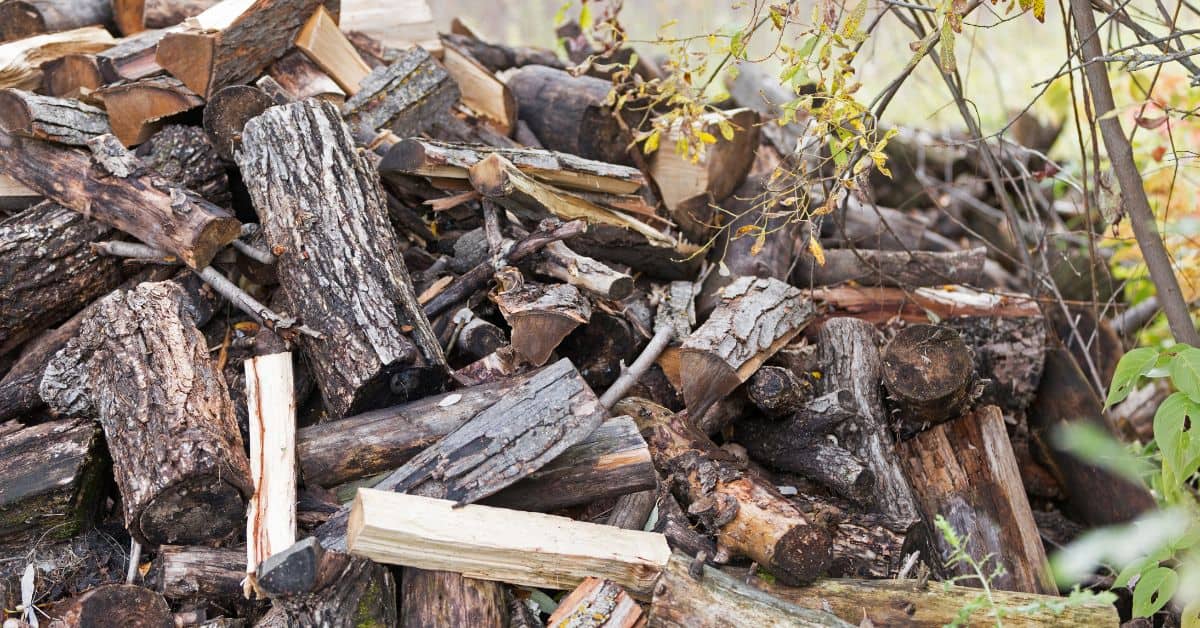
Tips for Efficiently Using Your Firewood
When it comes to heating your home or enjoying a cozy fire, using firewood is a popular choice. However, to get the most out of your firewood and ensure efficient use, there are several tips to keep in mind.
One of the most important factors is choosing the right type of firewood, but even the best firewood can be wasted if not used properly.
In this section, we will cover some tips for maximizing the efficiency of your firewood, including proper stacking and storage, building efficient fires, and regular maintenance of your heating appliance. By following these tips, you can get the most out of your firewood and enjoy a warm and cozy home throughout the winter months.
Recommended Read: How To Get The Smell Of Campfire Out Of Clothes
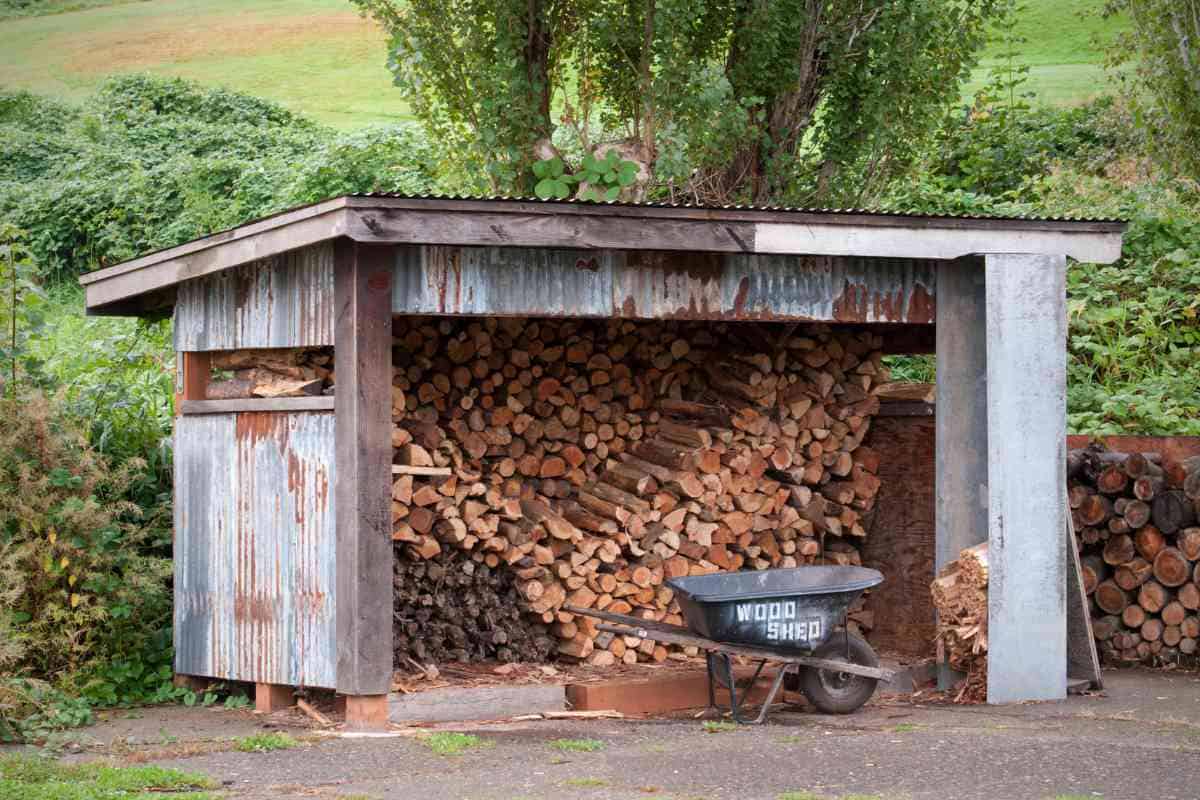
Here’s a list of tips for efficiently using your firewood:
- Use properly seasoned firewood: Make sure your firewood has been properly seasoned for at least six months to a year, so it burns cleanly and efficiently.
- Use the right amount of wood: Don’t overload your stove or fireplace with too much wood, as this can cause poor combustion and create excess smoke.
- Keep your firewood dry: Store your firewood off the ground and covered to prevent it from getting damp and difficult to light.
- Use the right type of wood: Choose the best firewood for your needs based on the appliance you’re using and your local availability.
- Build a good fire: Start with a small fire using kindling, and gradually add larger logs as the fire grows.
- Keep the air flowing: Make sure there’s enough air flow to keep the fire burning cleanly and efficiently.
- Use a grate: If you’re using a fireplace, use a grate to improve air flow and promote good combustion.
- Maintain your appliance: Keep your stove or fireplace clean and in good working order to maximize efficiency.
- Don’t burn trash or treated wood: These materials can release harmful chemicals and pollutants, and damage your stove or fireplace.
- Use firewood ashes wisely: Firewood ashes can be used as a natural fertilizer, but be sure to avoid using them on plants that prefer acidic soil.
Mastering the Art of Storing Firewood: Tips for Keeping Your Wood Safe and Dry”
Storing firewood is a crucial step in ensuring that your wood is ready to burn when you need it. Properly stored firewood will burn more efficiently and last longer, providing you with the warmth and comfort you need.
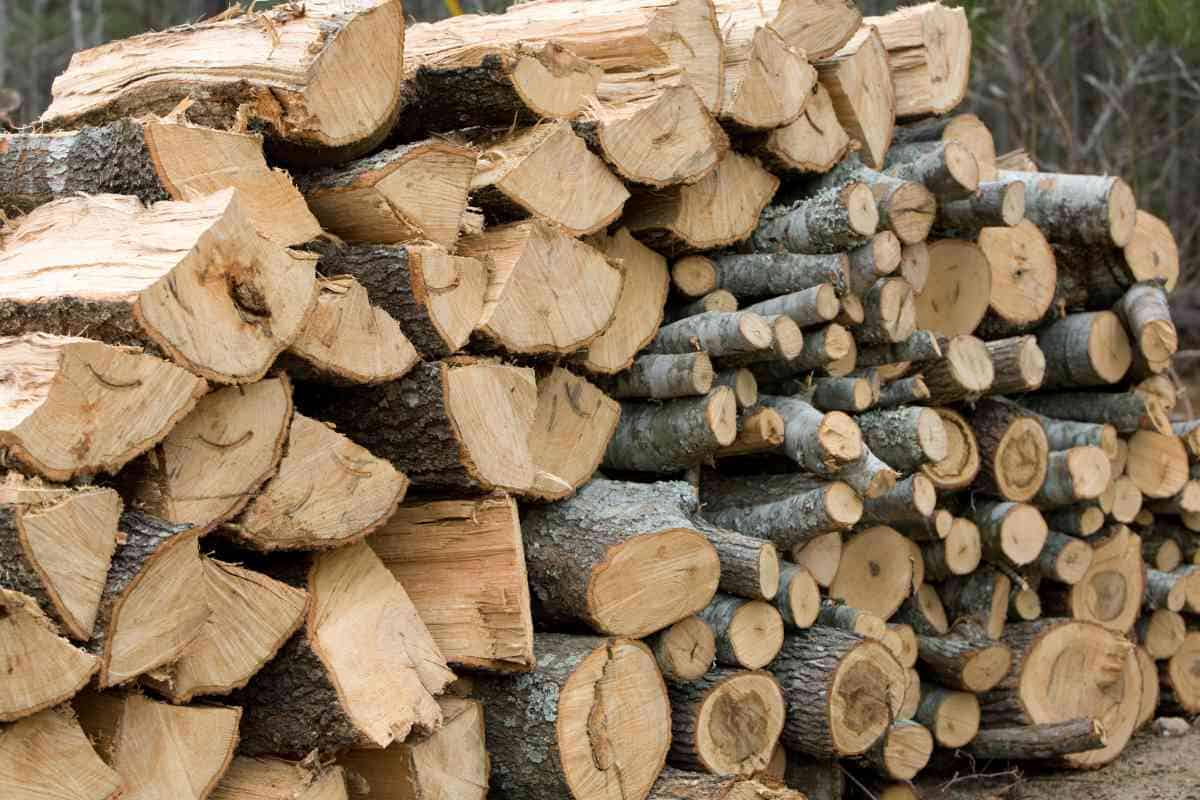
Here are some tips for storing firewood:
- Location: Choose a location that is dry, sheltered from the wind, and receives plenty of sunlight. This will help to keep the firewood dry and reduce the risk of mold growth. Avoid storing firewood directly on the ground, as this can cause the wood to absorb moisture.
- Stack the Firewood: Stack the firewood in a neat and organized manner, using a cord or firewood rack. A cord is a measure of firewood that is 8 feet long, 4 feet high, and 4 feet deep. Stacking the wood in this manner will allow for proper air circulation, which helps to dry out the wood and prevent mold growth.
- Avoid Stacking Firewood Against the House: Stacking firewood directly against the house can lead to moisture buildup and attract pests, such as rodents and termites. Keep the wood at least 2 feet away from the house, and ensure that it is not blocking any vents or air intakes.
- Choose the Right Firewood: Select the best firewood for storage. Hardwoods, such as oak and hickory, are denser and heavier, making them more resistant to moisture. Softwoods, such as pine and spruce, are lighter and more porous, making them more susceptible to moisture. Choose the right type of firewood for your location and climate.
- Keep the Firewood Covered: Cover the firewood with a tarp or other waterproof cover to protect it from rain and snow. Make sure the cover extends beyond the edges of the firewood stack, so that water cannot seep in from the sides.
- Avoid Overstocking: Avoid overstocking the firewood stack, as this can prevent proper air circulation and increase the risk of mold growth. Keep the firewood stack to a manageable size, and replenish it as needed.
- Rotate the Firewood: Rotate the firewood stack on a regular basis, so that the oldest wood is used first. This will help to prevent the wood from becoming too dry or too wet, and ensure that it is always ready to burn.
- Don’t Store Firewood Indoors: Do not store firewood indoors, as this can attract pests and increase the risk of fire. Instead, keep the firewood stack outside and bring in only the amount of wood needed for each fire.
By following these tips for storing firewood, you can ensure that your wood is dry, safe, and ready to burn when you need it. With a little effort and planning, you can enjoy a warm and cozy fire all winter long.
Recommended Reading: Can You Store Firewood In A Basement? (Solved!)
Exploring Different Types of Firewood Storage Options
When it comes to storing firewood, there are a variety of options available that can protect your wood from moisture, pests, and other damaging elements. Here, we’ll take a look at some popular types of firewood storage options and discuss their pros and cons.
- Firewood Racks
Firewood racks are a popular option for those who have limited space and want to store their wood in a neat and organized manner. They come in a variety of sizes and styles and can be made from materials like metal or wood.
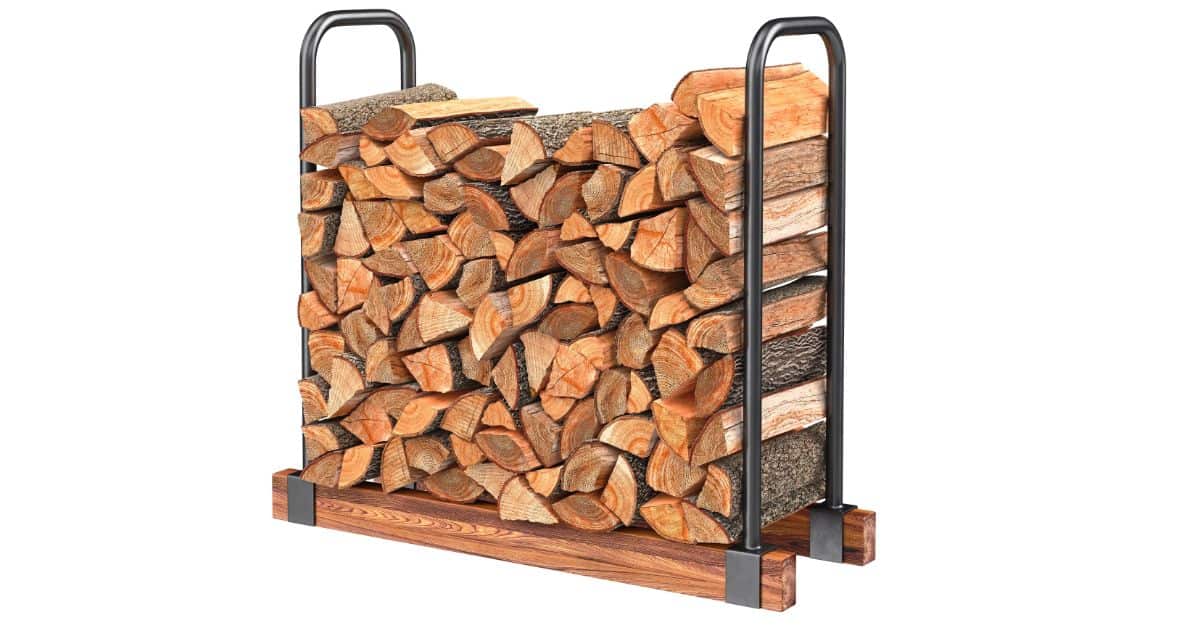
One of the main advantages of using a firewood rack is that it keeps your wood off the ground, which allows air to circulate around the wood and helps it dry out faster. Additionally, it makes it easier to access the wood and can be a great option for those who want to store their wood close to their home.
- Firewood Sheds
Firewood sheds are a great option for those who have a larger amount of firewood to store and want to keep it out of sight. They come in a variety of sizes and styles and can be made from materials like wood or metal.
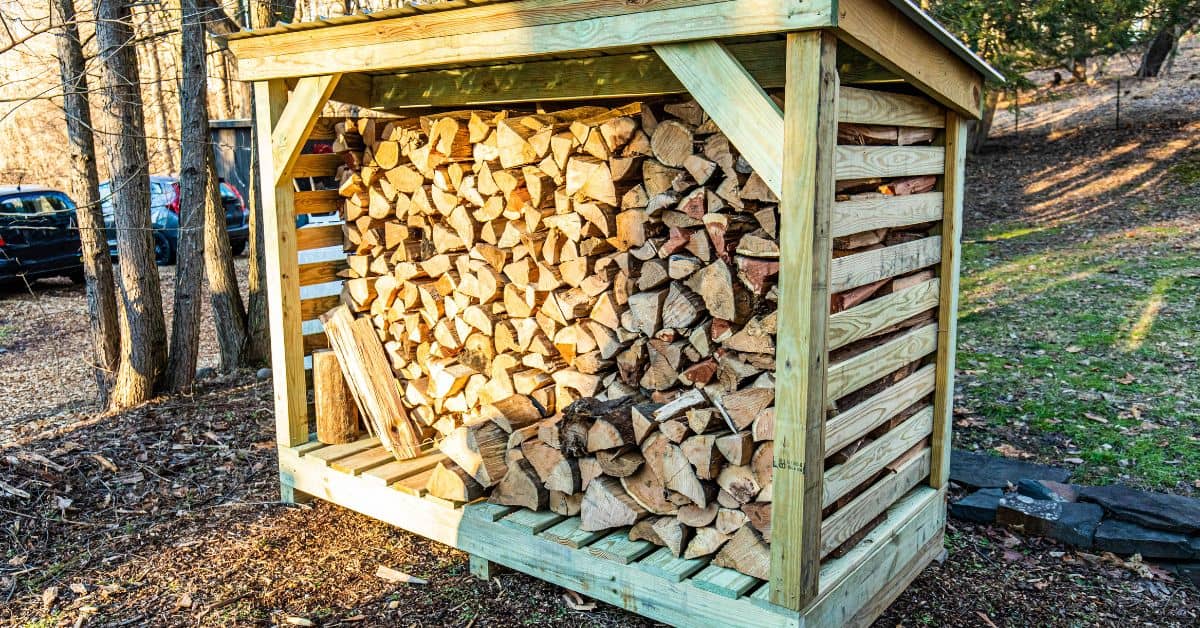
One of the main advantages of using a firewood shed is that it provides protection from the elements, keeping your wood dry and ready to burn. It’s also a great option for those who want to store a large amount of wood without taking up valuable space in their garage or basement.
- Firewood Storage Boxes
Firewood storage boxes are a smaller option for those who have limited space but still want to keep their wood organized and dry.
They are typically made from materials like wood or plastic and can be placed on a porch, deck, or other outdoor area. One of the main advantages of using a firewood storage box is that it provides protection from the elements and pests, while also keeping your wood organized and easy to access.
- Covered Firewood Racks
Covered firewood racks are similar to regular firewood racks, but they come with a cover to protect your wood from the elements.
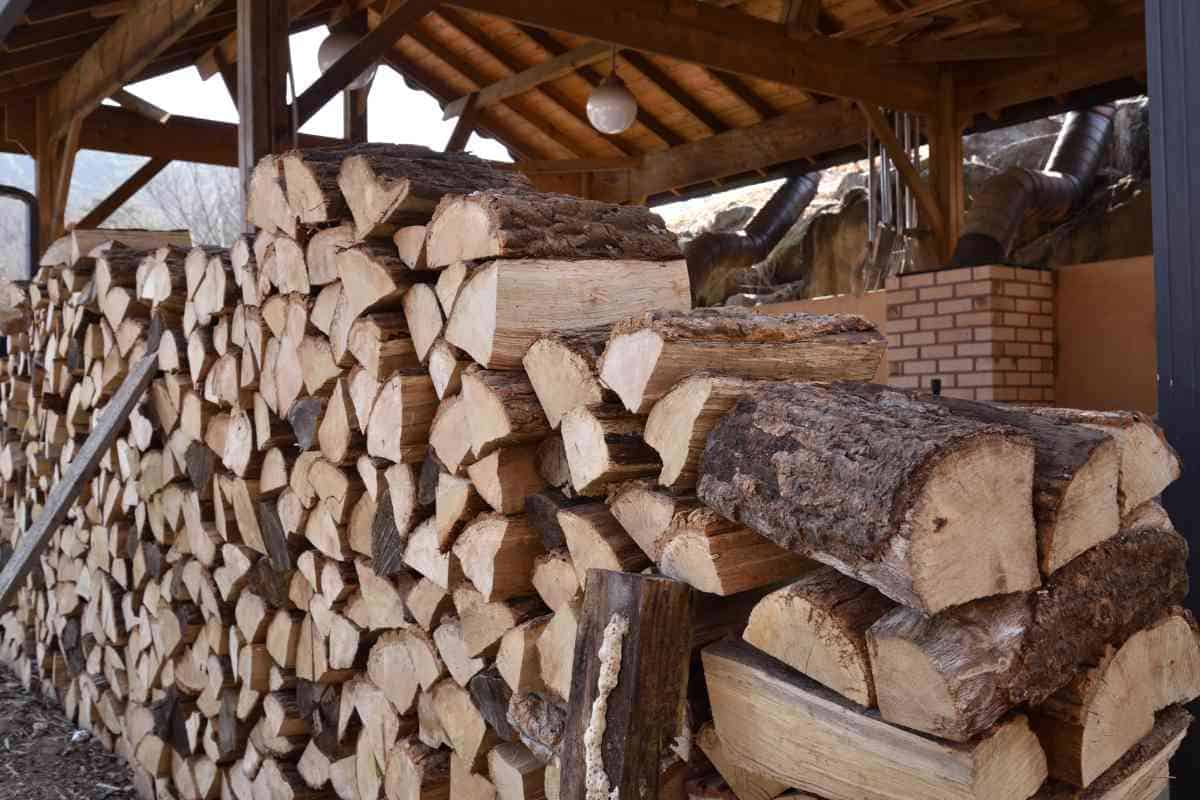
They are a great option for those who want to keep their wood dry but don’t want to invest in a full-size firewood shed. They come in a variety of sizes and styles and can be made from materials like wood or metal.
Personal Experience:
As someone who regularly uses firewood for heating and cooking, I have found that a combination of a raised firewood shed for long-term storage and a firewood rack for daily access works best for me.
The raised firewood shed allows for proper ventilation and keeps the wood dry, while the rack near my house allows me to easily access the wood I plan to use for the week.
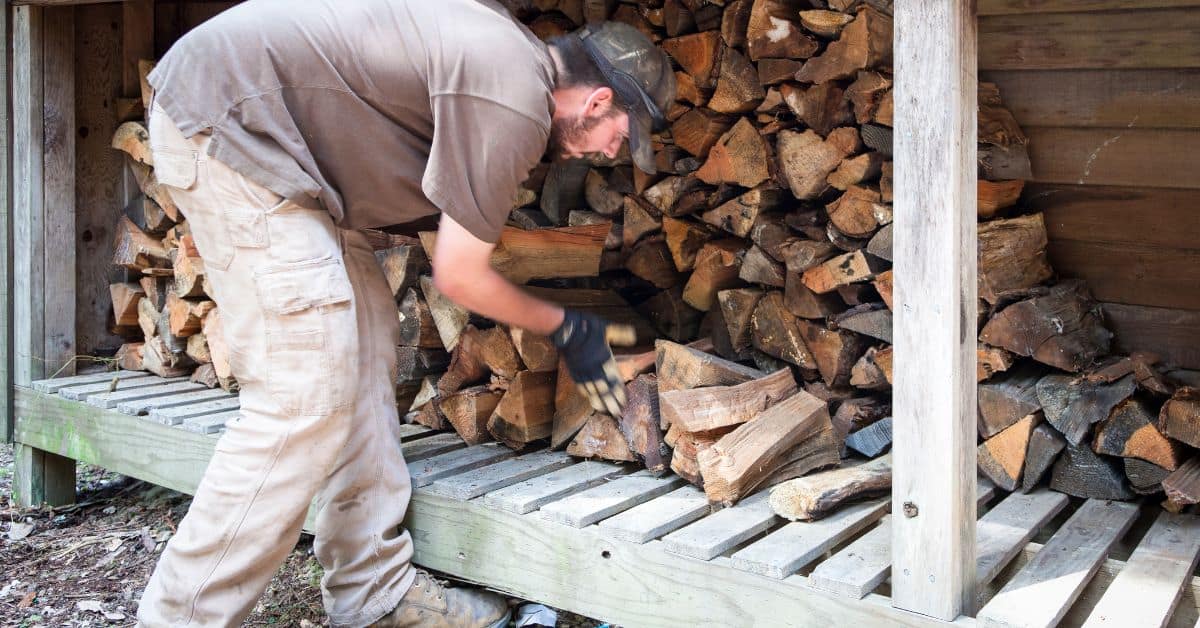
Regardless of the type of storage option you choose, be sure to select one that fits your needs and provides proper protection for your wood.
Suggested Reading: Do You Need To Cover Firewood?
Building the Perfect Fire: Expert Tips for Maximum Heat and Longest Burn Time
There’s nothing quite like the warmth and comfort of a roaring fire on a cold winter day. But to truly get the most out of your firewood, you need to know how to build the perfect fire. Here are some tips I’ve picked up over the years to help me get the most heat and longest burn time from firewood. Hopefully you find these helpful too.
- Start with the right firewood: The first step to building the perfect fire is selecting the right firewood. Choose a high-quality firewood like oak or hickory, which are dense and have a high heat output. Avoid softwoods like pine, which burn quickly and produce less heat.
- Use a mix of sizes: To build a fire that burns hot and long, you need a mix of log sizes. Start with smaller pieces of kindling, then add larger pieces of split firewood. You can also add some larger unsplit logs for a longer burn time.
- Build a solid base: Start by laying down a base of kindling and small logs in a criss-cross pattern. This creates air flow and helps the fire start faster.
- Create air flow: As you add larger logs, be sure to leave space between them to allow air flow. This will keep the fire burning hot and prevent smoldering.
- Use a top-down burn: Instead of starting with kindling and adding larger logs, try a top-down burn. Place the larger logs on the bottom, then add smaller logs and kindling on top. This allows the fire to start from the top and burn down, producing a longer and hotter burn.
- Maintain the fire: Once your fire is burning, maintain it by adding more logs as needed. Avoid smothering the fire by adding too many logs at once.

By following these expert tips, you can build the perfect fire that produces maximum heat and longest burn time. Whether you’re using your firewood for heating your home, cooking, or just enjoying a cozy evening, the right fire can make all the difference.
Key Takeaways:
- Properly selecting, preparing, storing, and using firewood is essential to ensuring a safe, efficient, and enjoyable wood-burning experience.
- The type of firewood you choose has a significant impact on its heating capacity, burn time, and ash production.
- Kiln-dried, seasoned firewood is the best option for optimal burning results.
- Proper storage of firewood can prevent pest infestation, rot, and mold growth.
- Using firewood efficiently can increase heat output, reduce smoke and ash production, and prolong burn time.
- Common mistakes, such as using wet or green wood, can result in a dangerous and inefficient burn.
- With the right knowledge and equipment, anyone can become a master at using firewood.
More Firewood Articles
Frequently Asked Questions About Firewood:
Why firewood pops?
Firewood pops due to moisture trapped inside the wood that turns into steam and creates pressure.
Can firewood get rained on?
Firewood can get rained on, but it’s best to keep it covered to avoid excess moisture that can affect burn quality.
Should firewood sizzle?
Firewood should not sizzle. Sizzling indicates that the wood is not fully dried and contains excess moisture.
Which firewood produces the least ash?
Hardwoods like oak and maple produce the least ash, while softwoods like pine and spruce produce more.

Do firewood drill bits work?
Firewood drill bits work well for splitting wood and can be a time saver, but they are not necessary.
What firewood burns the longest?
Hardwoods like oak, hickory, and maple burn the longest and provide the most heat.
Does firewood need to be seasoned?
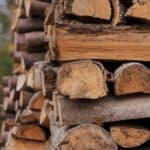
Yes, firewood should be seasoned for at least six months to a year to reduce moisture and increase burn efficiency.
Why does firewood smoke?

Firewood smokes when it’s not fully dried, has too much moisture, or is not being burned at a high enough temperature.
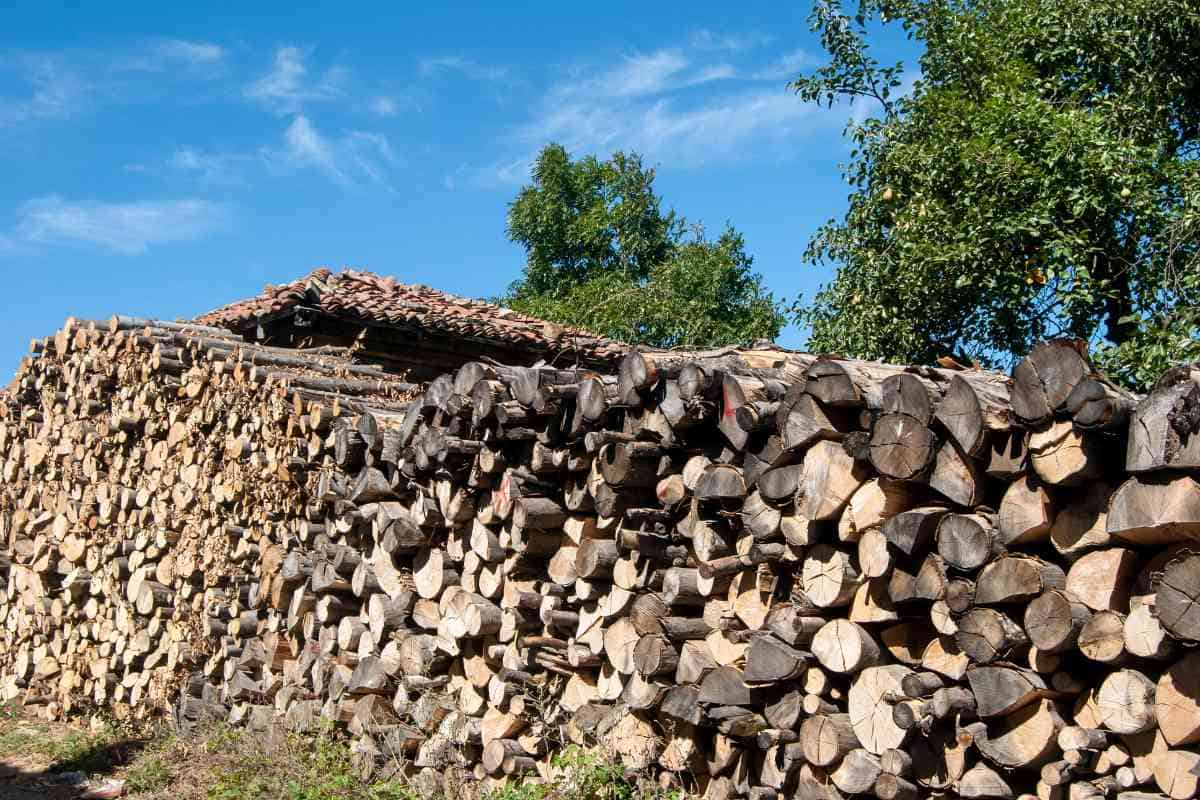
Can firewood be too old?
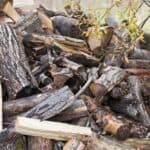
Yes, firewood can be too old and can become dry and brittle, losing its energy content and burning less efficiently.
Will firewood season in a shed?
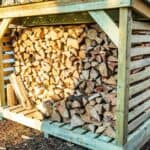
Firewood can season in a shed as long as it’s well-ventilated and protected from excess moisture.
Should firewood be covered outside?

Yes, firewood should be covered outside to protect it from excess moisture and other weather elements.
Are firewood ashes good for compost?
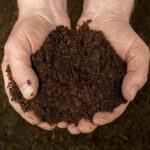
Yes, firewood ashes can be a great addition to compost, as they contain nutrients that can help with soil pH balance.
Which firewood smokes the least?
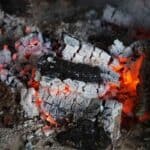
Hardwoods like oak, maple, and hickory tend to smoke less than softwoods like pine and spruce.





